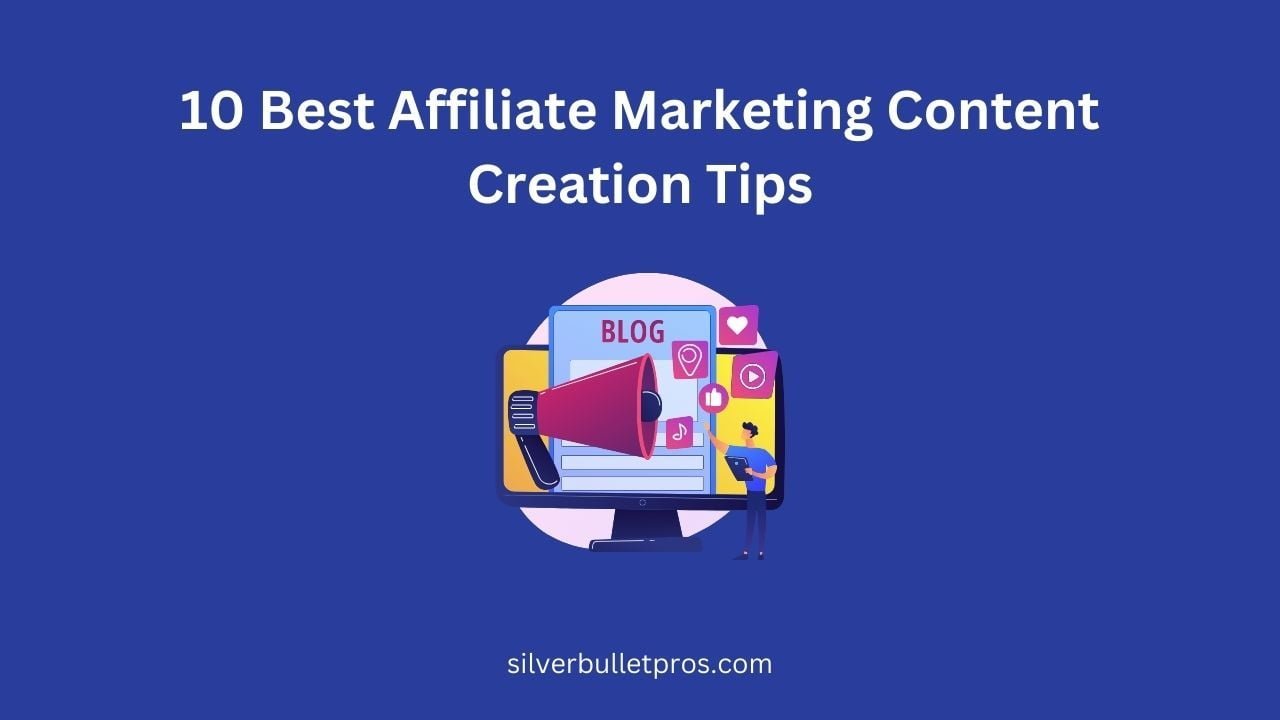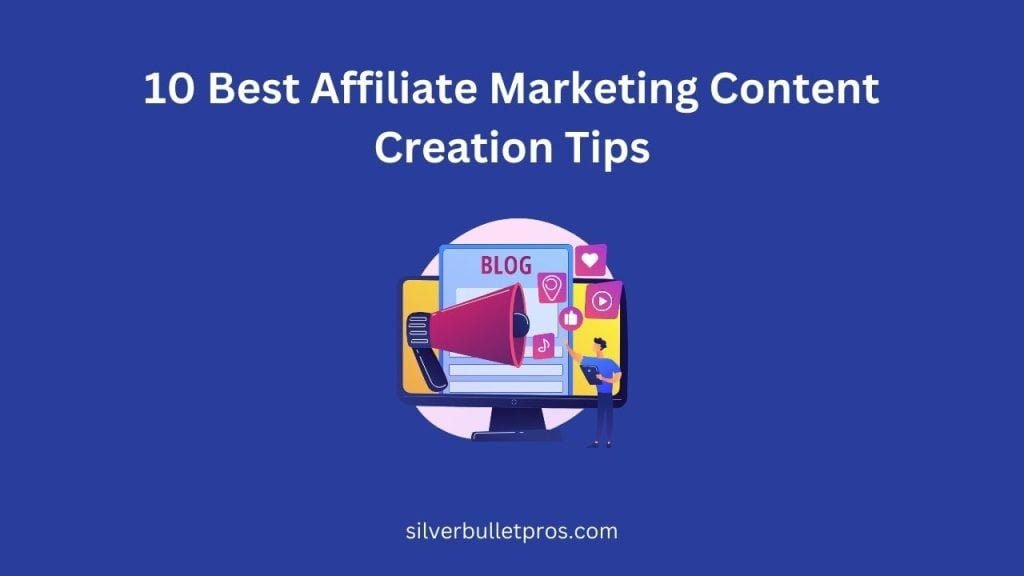

Affiliate marketing is a performance-based marketing strategy where businesses compensate affiliates for promoting their products or services and driving desired actions, such as clicks, leads, or sales, through the affiliate's marketing efforts. Affiliate marketing has emerged as a highly significant and lucrative business model in today's digital landscape. At its core, it allows individuals to earn commissions by promoting products or services offered by other companies. The beauty of affiliate marketing lies in its low barrier to entry, flexibility, and potential for passive income streams. With minimal startup costs and the ability to work from anywhere, it has opened up endless opportunities for entrepreneurs and influencers alike. Moreover, affiliate marketing aligns the interests of merchants and affiliates, creating a win-win scenario where both parties benefit from successful product promotions. As e-commerce continues to thrive and consumer behavior shifts increasingly towards online shopping, the importance of affiliate marketing is only set to grow, making it an attractive and sustainable income avenue for those willing to leverage its potential effectively.
In this article, major tips to create high quality content for affiliate marketing, including Craft high-quality, evergreen content that engages your audience through compelling storytelling, leverages social proof, optimizes for search engines, and includes high-converting call-to-actions, are given. 10 best affiliate marketing tips
For content creation are given in detail.
1. Craft High-Quality Content
Crafting high-quality content is foundational to any successful content marketing strategy. This involves creating content that is valuable, relevant, and engaging to your target audience. High-quality content resonates with your audience's interests, addresses their pain points, and provides solutions or valuable insights. Whether it's blog posts, videos, infographics, or podcasts, the content should be well-researched, well-written, and visually appealing. By focusing on quality, you can establish credibility, build trust with your audience, and differentiate your brand in a competitive landscape.
2. Know Your Audience
Understanding your audience is essential for creating content that resonates and drives engagement. Take the time to research and define your target audience, including their demographics, interests, preferences, and pain points. This knowledge enables you to tailor your content to meet the specific needs and interests of your audience, making it more relevant and compelling. By knowing your audience, you can create content that speaks directly to their concerns, captures their attention, and fosters a deeper connection with your brand.
3. Use Compelling Storytelling
Compelling storytelling is a powerful tool for capturing attention, evoking emotions, and conveying your brand's message in a memorable way. Incorporate storytelling elements such as narratives, anecdotes, and personal experiences into your content to create a more engaging and impactful experience for your audience. Whether you're sharing customer success stories, behind-the-scenes insights, or brand origin tales, storytelling humanizes your brand and fosters a deeper connection with your audience.
4. Leverage Social Proof
Social proof, such as customer testimonials, reviews, case studies, and endorsements, can significantly influence purchasing decisions and build trust with your audience. Incorporate social proof into your content to demonstrate the value and credibility of your products or services. Highlight positive experiences from satisfied customers, showcase user-generated content, or feature endorsements from industry experts or influencers. By leveraging social proof, you can reassure potential customers, alleviate doubts, and inspire confidence in your brand.
5. Create Evergreen Content
Evergreen content is content that remains relevant and valuable to your audience over time, providing long-term benefits in terms of traffic, engagement, and lead generation. Create evergreen content that addresses timeless topics, solves perennial problems, or offers enduring insights. This type of content continues to attract organic traffic, generate leads, and build authority for your brand long after it's been published. By creating evergreen content, you can maximize the return on your content investment and establish a sustainable content marketing strategy.
6. Optimize for Search Engines
Search engine optimization (SEO) is crucial for ensuring your content is discoverable and ranks well in search engine results pages (SERPs). Optimize your content for relevant keywords, incorporate descriptive titles, headings, and meta tags, and use internal and external links to improve your website's visibility and authority. Additionally, optimize your content for mobile devices, improve page load times, and enhance user experience to improve your search engine rankings and drive organic traffic. By prioritizing SEO, you can increase your content's visibility, attract more qualified leads, and grow your online presence.
7. Use High-Converting Call-to-Actions
Effective call-to-actions (CTAs) prompt your audience to take a desired action, whether it's subscribing to your newsletter, downloading a resource, or making a purchase. Use clear, compelling CTAs that stand out and provide a clear benefit or incentive for your audience to act. Place CTAs strategically throughout your content, including at the end of blog posts, within email newsletters, or on landing pages, to encourage engagement and conversions. By using high-converting CTAs, you can guide your audience through the buyer's journey and drive measurable results for your business.
8. Promote Your Content
Promoting your content is essential for reaching a wider audience and maximizing its impact. Utilize various promotion channels such as social media, email marketing, influencer partnerships, and online communities to distribute your content to your target audience. Tailor your promotion strategy to each platform and audience segment, and experiment with different tactics to see what resonates best. By actively promoting your content, you can increase its visibility, attract more traffic, and generate leads for your business.
9. Track and Measure Your Results
Tracking and measuring your content marketing efforts is essential for evaluating performance, identifying areas for improvement, and optimizing your strategy over time. Use analytics tools to track key metrics such as website traffic, engagement, conversion rates, and ROI for your content campaigns. Analyze the data to gain insights into what content resonates with your audience, which channels are most effective, and how to allocate resources for maximum impact. By monitoring your results, you can make data-driven decisions and continually refine your content marketing strategy for better outcomes.
10. Be Patient and Consistent
Content marketing is a long-term strategy that requires patience, consistency, and perseverance to see results. It takes time to build an audience, establish authority, and drive meaningful engagement with your content. Stay committed to creating high-quality content regularly and consistently engaging with your audience across various channels. Set realistic goals, track your progress, and adjust your strategy as needed, but remember that success won't happen overnight. By staying patient and consistent, you can gradually build momentum and achieve sustainable growth with your content marketing efforts.
What Is Affiliate Marketing?
Affiliate marketing is a type of performance-based marketing where businesses reward individuals (affiliates or publishers) for promoting their products or services and driving desired actions, such as clicks, leads, or sales, through the affiliates' marketing efforts. Affiliates earn commissions or rewards for each successful referral or customer acquisition they generate for the merchant through their promotional activities, which can include websites, blogs, social media, email marketing, or other online channels. This arrangement allows merchants to expand their reach and increase sales without upfront marketing costs, while affiliates have the opportunity to monetize their online presence and earn passive income by promoting products or services relevant to their audience.
What are the best traffic sources for affiliate marketing?
The best traffic sources for affiliate marketing include search engines (SEO), social media platforms, email marketing, influencer partnerships, and content marketing efforts such as blogging and video creation.
What are the best ways to promote affiliate links?
The best ways to promote affiliate links include creating valuable content that addresses audience needs, leveraging social media platforms for promotion, using email marketing to reach subscribers, collaborating with influencers, and optimizing content for search engines.
What are the most common mistakes to avoid when promoting affiliate links?
Common mistakes to avoid when promoting affiliate links include not disclosing affiliate relationships, promoting irrelevant products, over-promoting products, neglecting to track performance, and not providing value to the audience.
What is the future of affiliate marketing?
The future of affiliate marketing is expected to involve continued growth, technological advancements, and increased emphasis on personalization and authenticity. Trends such as influencer marketing, mobile commerce, and AI-driven analytics are likely to shape the future landscape of affiliate marketing.
How to build a strong relationship with your audience?
Building a strong relationship with your audience involves understanding their needs and interests, engaging with them regularly through various channels, providing valuable content, being authentic and transparent, and actively listening to their feedback.
How to track your results and optimize your affiliate marketing campaigns?
Tracking results and optimizing affiliate marketing campaigns involves setting clear goals, using tracking tools to monitor performance metrics such as clicks, conversions, and ROI, analyzing data to identify areas for improvement, experimenting with different strategies, and continuously refining your approach based on insights gained.